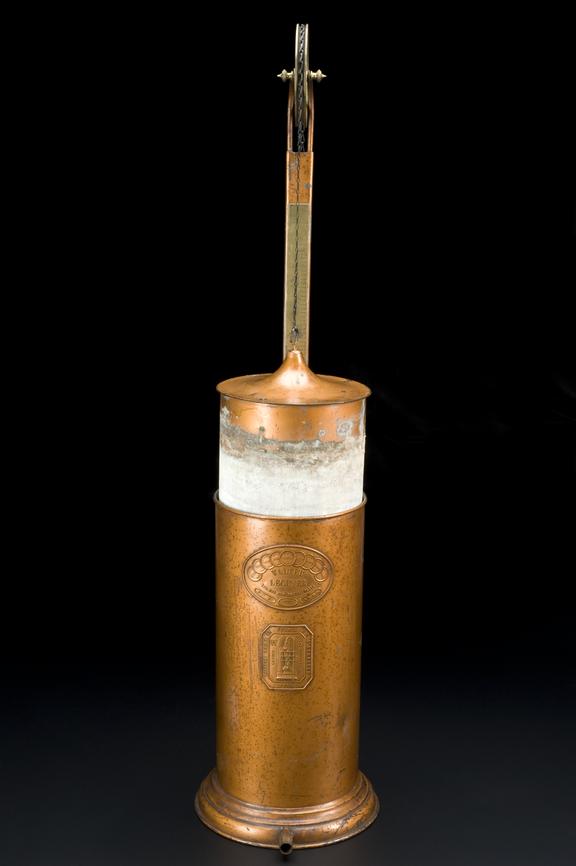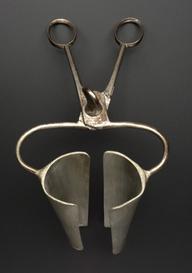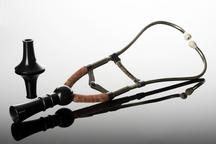





Respirometer, by Walter Lecuyer, Paris, 1876-1900
Spirometers were developed in England in the 1840s. They measured the vital capacity of the lungs. Vital capacity means the largest amount of air they can hold. This indicates the health of the respiratory system. The patient breathed into the device. Their breath bubbled up into the water-filled collecting drum. This action pushed up a sliding cylinder, counterbalanced by a weight. A measuring scale showed the capacity of the lungs. This was useful for assessing the improvement or deterioration of lung function in conditions such as tuberculosis. This example was made by Walter Lecuyer of Paris in the late 1800s. It is made of iron and brass.
Details
- Category:
- Clinical Diagnosis
- Collection:
- Sir Henry Wellcome's Museum Collection
- Object Number:
- A602278
- Measurements:
-
overall: 924 mm x 230 mm x 257 mm,
- type:
- spirometer




